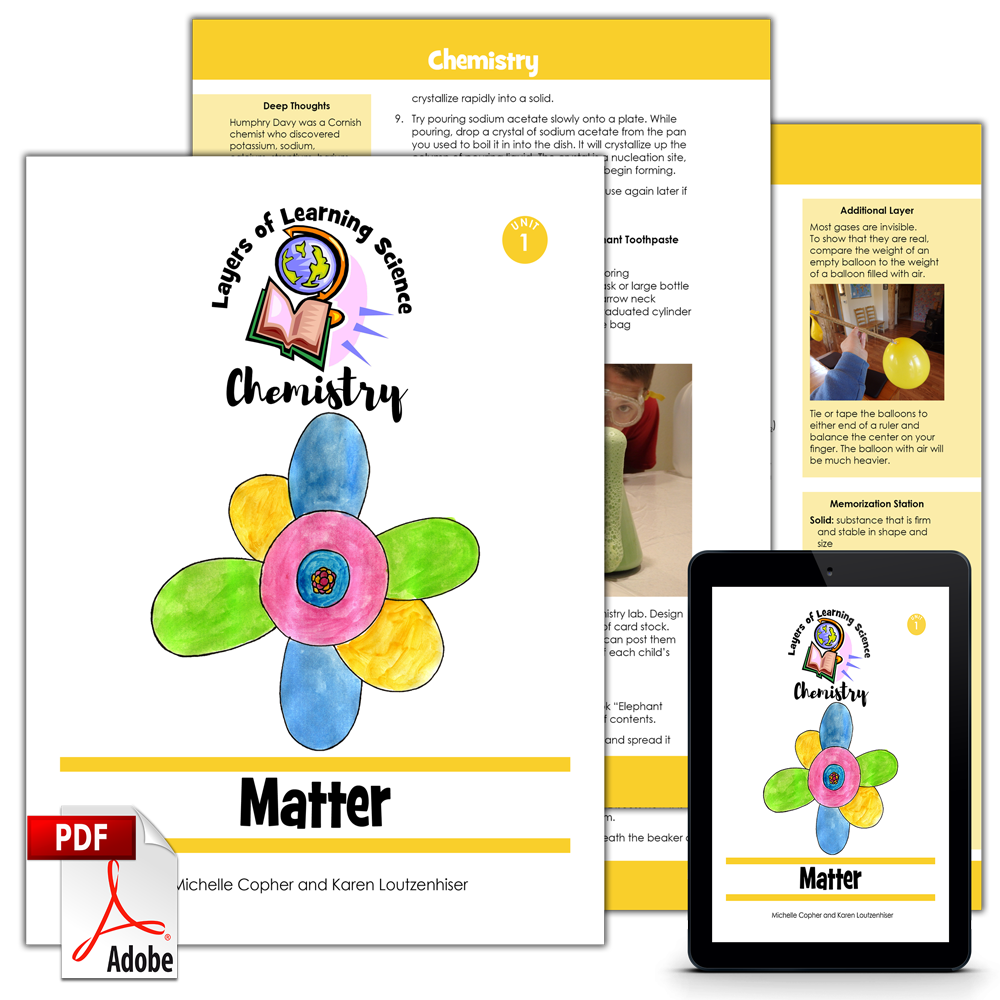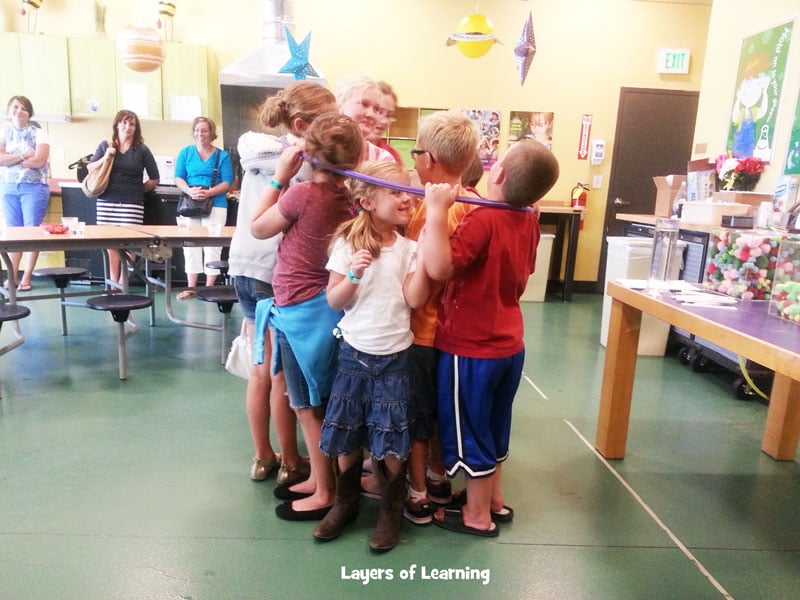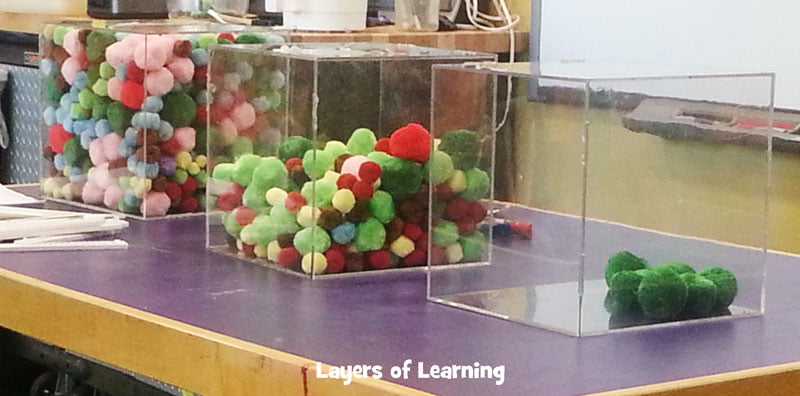This exploration is for all ages, as the colored smilies show. You can learn about states of matter with your whole family together!




The states of matter demonstration is a chemistry experiment from Matter about states of matter. Layers of Learning has hands-on experiments in every unit of this family-friendly curriculum. Learn more about Layers of Learning.
The states of matter can be confusing. We often show them (like when we show an ice cube, a glass of water, and then steam rising from the pot on the stove), but we rarely explain to kids WHY they behave the way they do. Solids, liquids, and gases make a little more sense when you look at the microscopic make-up of matter.
Step 1: Library Research
Before you begin exploring, read a book or two about states of matter. Here are some suggestions, but if you can’t find these, look for books at your library about states of matter, solids, liquids, and gases. The colored smilies above each book tell you what age level they’re recommended for.
As Amazon affiliates, the recommended books and products below kick back a tiny percentage of your purchase to us. It doesn’t affect your cost and it helps us run our website. We thank you!

What Is the World Made Of?
by Kathleen Weidner Zoehfeld

Step 2: States of Matter Experiment
For this experiment you will need a hula hoop, three clear storage containers with lids, and pom poms.
Start by taking as many kids as you can possibly get into a hula hoop, then ask them to dance, jump, and wiggle! Not too easy when all those molecules are all packed in tightly! That’s like a solid.

Now have a few kids step out and ask the same thing. That’s like a liquid. The particles have a little more room to move. And finally, leave just one kid in the hula hoop and have her move it and shake it! She can move all over any way she wants . . . plenty of room when you’re a gas!
Solids are tightly packed, usually in a regular pattern. They retain a fixed shape. Liquids are close together, but not regularly arranged. They conform to the shape of whatever container they are in. They slide, move, flow, and vibrate. Gases have plenty of room; this allows them to move freely about as they please. Unlike solids, they are also compressible because there is still plenty of room in between their molecules.
Now get your 3 identical clear containers. Pack the first one full of pompoms like a solid, the second one about half full, and the final one with just a handful of pompoms.

If you shake it, the pom-poms inside can’t move. The middle one is like a liquid. There are lots of molecules, but not so many that it can’t move and flow as a liquid does. And the last one is like a gas – very few molecules, all with plenty of space. When you shake this box the molecules move freely!
Step 3: Show What You Know
In your science lab notebook draw a picture showing this concept, then write examples of lots of solids, liquids, and gases to help solidify the concept. (I couldn’t help myself!)
Additional Layers
Additional Layers are extra activities you can do or tangents you can take off on. You will find them in the sidebars of each Layers of Learning unit. They are optional, so just choose what interests you.
Famous Folks
People have been aware of the basic states of matter and phase changes since ancient times, but Antoine Lavoisier was the first to write about it in a scientific way.
All bodies in nature present themselves to us in three different states. Some are solid like stones, earth, salts, and metals. Others are fluid like water, mercury, spirits of wine; and others finally are in a third state which I shall call the state of expansion or of vapours, such as water when one heats it above the boiling point. The same body can pass successively through each of these states, and in order to make this phenomenon occur, it is necessary only to combine it with a greater or lesser quantity of the matter of fire.
Antoine Lavoisier
Additional Layer
There is a fourth state of matter called plasma. Find out about plasma.

Then find out about the fifth state of matter, Bose-Einstein Condensates. There are even more exotic states of matter you can learn about with a little research.
Fabulous Fact
Matter can change from a solid to a liquid to a gas by adding heat. Ice melts to water and then evaporates into the air.
But matter can also go straight from a solid to a gas. This is called sublimation.
Get a Free Unit
Choose between the first unit in each Layers of Learning subject to try for free when you sign up for the newsletter.
We never spam and you can cancel your subscription at any time.








This is exactly what I was looking for to teach states of matter. Thank you for sharing!!!
I did this with my third grade class today and it was a hit! Great lesson!!